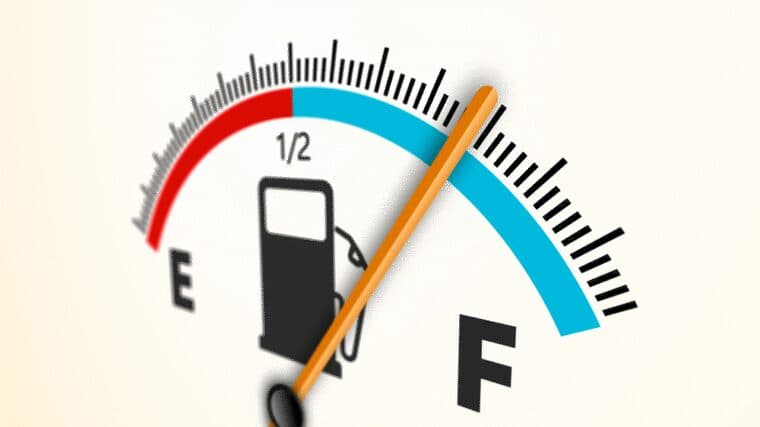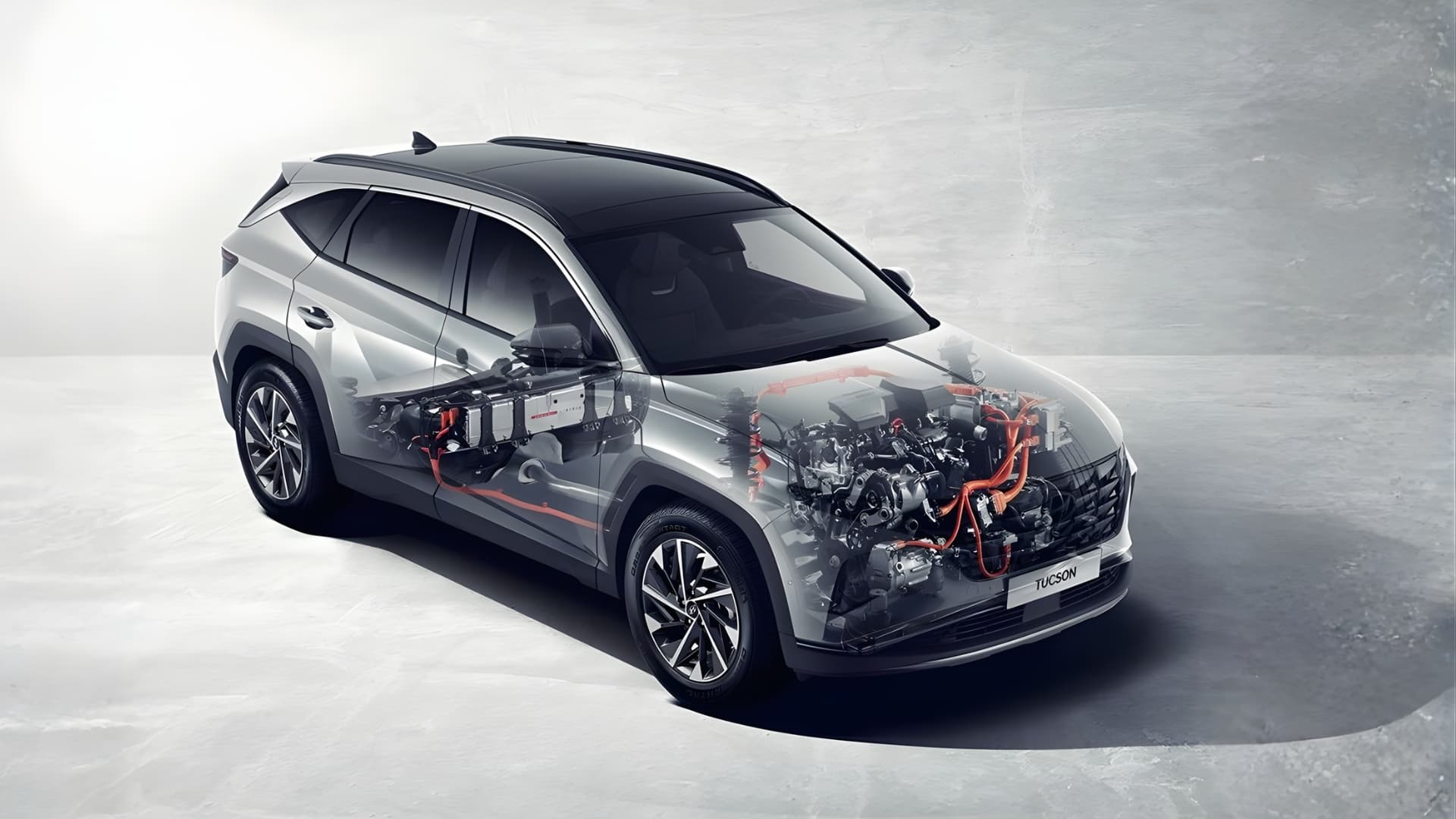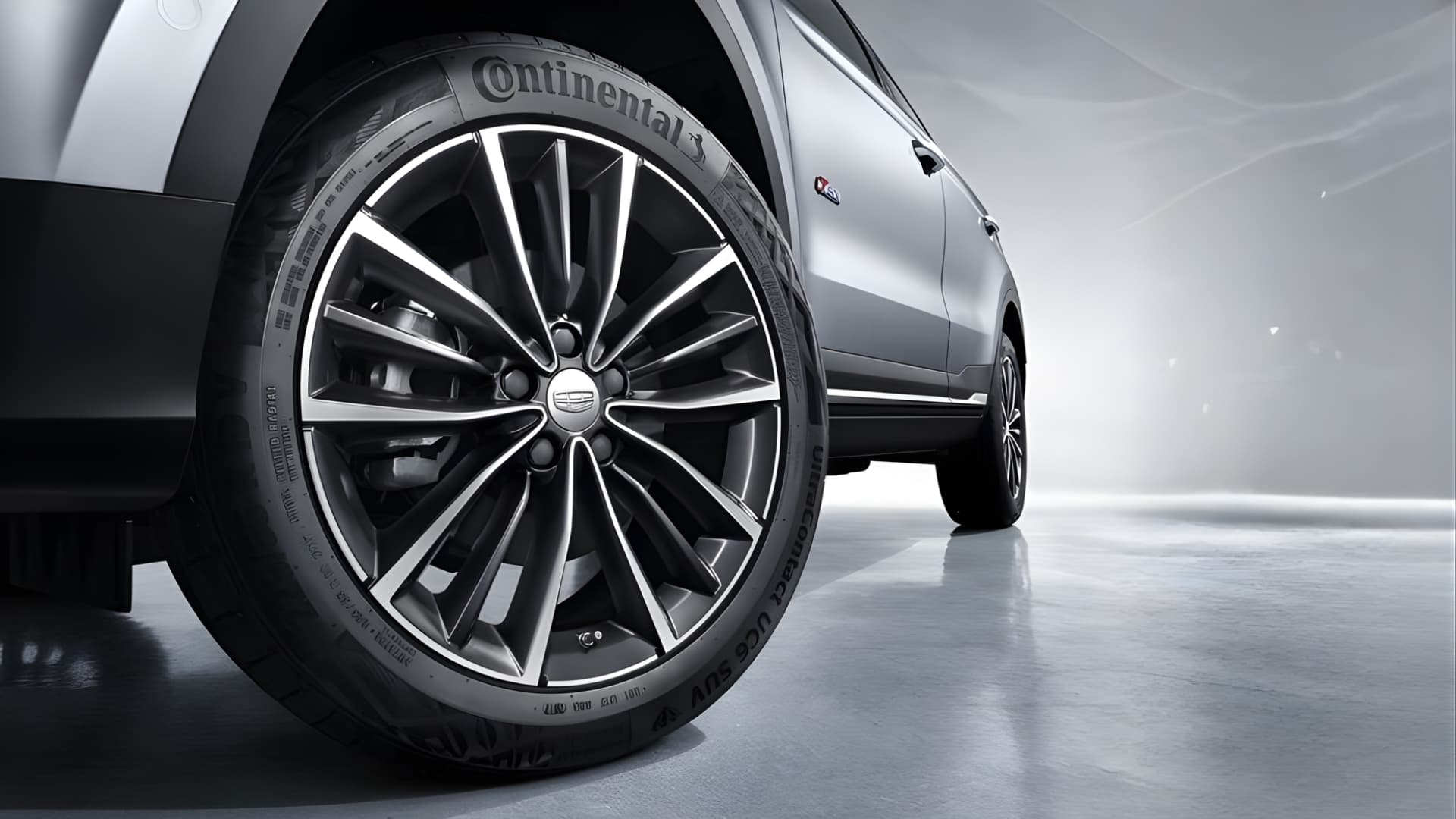
Have you ever wondered How to Maximize Fuel Efficiency and Save Money on Fuel? With the price of fuel always on the rise it is essential to look at ways to reduce your costs and make your budget go further.
Did you know that there are many effective ways to manage gasoline consumption including driving tactics, adjusting the weight of your automobile, looking after vehicle and buying fuel in the correct time in the cycle.
This article discusses multiple methods to help you learn how you can get great fuel efficiency while spending less cash overall.
Master Your Driving Techniques
The way you drive has a major influence on how much fuel your car consumes, and subsequently its efficiency. By being conscious of the style we use behind the wheel - such as gentle acceleration, brakes applied earlier and using cruise control functions - this can help to reduce petrol consumption while providing savings in your pocket.
Gradual Acceleration
Gradual acceleration significantly impacts fuel efficiency in vehicles. By accelerating smoothly, fuel efficiency is optimized, as the engine operates more efficiently at certain RPM levels. This method prevents the cycle of rapid acceleration followed by unnecessary braking, which is less fuel-efficient.
Maintaining a steady speed and reducing frequency of speed changes are key aspects of this strategy. For instance, easing off the throttle early when approaching a red light to allow the vehicle to coast can save fuel, avoiding the energy loss from having to stop abruptly.
In contrast, aggressive driving, including rapid acceleration, can increase fuel consumption substantially. Therefore, adopting a gradual acceleration approach is a crucial factor in reducing fuel consumption and enhancing overall vehicle efficiency.
Early Braking
Early braking is another effective strategy for reducing fuel consumption in vehicles. This approach involves anticipating traffic conditions and braking gradually well in advance of a stop. By doing so, it allows the vehicle to utilize kinetic energy more efficiently and reduces the need for subsequent acceleration, which in turn saves fuel.
When drivers brake early, they can often take advantage of the vehicle's momentum to continue moving forward without needing additional power. This reduces the amount of fuel that would otherwise be used to accelerate the vehicle back to speed after a complete stop. Additionally, early braking contributes to smoother driving, which is inherently more fuel-efficient than stop-and-go traffic patterns.
Moreover, early braking reduces wear and tear on the vehicle's braking system, leading to less frequent replacements and maintenance. This not only saves fuel but also lowers overall vehicle operating costs.
Using Cruise Control
Using cruise control effectively in vehicles can significantly enhance fuel efficiency and improve driving comfort. When activated, cruise control maintains a constant speed, reducing the need for continuous throttle adjustments and preventing unnecessary acceleration. This steady speed maintenance is key to reducing fuel consumption, especially on long stretches of highway or in situations where consistent speed is easily maintained. Cruise control can be a great tool to maximize your vehicle’s fuel efficiency when driving on open roads or highways. This is because it keeps the speed steady, preventing any unnecessary acceleration or deceleration which in turn saves up to 7% of your fuel usage.
However, cruise control might not be the most fuel-efficient choice in certain driving conditions. For instance, on hilly terrain, it's more effective to allow the vehicle's speed to naturally decrease when going uphill and then use gravity to regain speed downhill. This method can save more fuel compared to cruise control trying to maintain a constant speed up and down hills, which can lead to unnecessary fuel consumption.
Additionally, drivers should be mindful of traffic conditions. In heavy traffic, where frequent adjustments of speed are necessary, manual control is preferable as cruise control might not respond quickly enough to changes, leading to inefficient fuel use and potential safety hazards.
Optimize Your Vehicle's Weight
It is essential to take into account the weight of your vehicle when considering its fuel efficiency. Heavier vehicles need more energy for acceleration and maintaining speed, which will ultimately result in increased consumption of fuel.
In order to save on petrol costs, it is important that you declutters your car from unnecessary items to further increase fuel and overall effectiveness and get better mileage overall.
Decluttering Your Car
Decluttering your car can lead to noticeable improvements in fuel efficiency. Lightening the load of your vehicle by removing seldom-used items from the trunk or back seat can significantly reduce its weight. In the context of Australia's vehicle market, where the average weight of light-duty vehicles has been increasing, reducing a vehicle's weight is even more pertinent.
Although specific Australian data on weight reduction and fuel efficiency is limited, the general principle holds true: lighter vehicles consume less fuel.
By decluttering, you not only create a more organized space in your car but also contribute to fuel savings. This practice is particularly beneficial given the trend towards heavier vehicles like SUVs and pickup trucks, which naturally have higher fuel consumption. Keeping your car free of unnecessary weight can thus be a simple yet effective way to enhance fuel economy.
Removing Roof Racks
When roof racks are attached to a vehicle, they create drag that can reduce its fuel efficiency as the air passing over them increases aerodynamic drag. An empty rack still diminishes mileage by around 2%. It is sensible for drivers to take off their rooftop carriers when not in use if they want to conserve gasoline and maintain optimal fuel economy.
Lightweight Accessories
Adding lightweight car components to electric vehicle, such as alloy wheels, can help enhance your automobile’s fuel efficiency. By reducing the weight of your vehicle, light accessories allow the engine to employ less energy while gaining speed and keeping a steady pace.
Making these adjustments could result in decreased consumption levels of fuel which would lead to cheaper fuel prices at gas stations alongside bettering your vehicles’ overall economy when it comes to utilizing petroleum resources.
Maintain Your Vehicle
Routine maintenance activities, including tire pressure checks, oil changes, and air filter replacements, are crucial for sustaining optimal fuel efficiency in Australian vehicles. Regular maintenance helps in preserving the vehicle's efficiency and can lead to cost savings when it comes to refueling.
Oil Changes and Air Filter Replacements
Regularly changing the oil and replacing air filters significantly contribute to fuel efficiency. A dirty air filter restricts airflow to the engine, leading to increased fuel consumption. In Australia, it is recommended to change the motor oil and air filter regularly, depending on the vehicle’s make and model and the driving conditions. Keeping up with these services ensures an efficient engine and reduced fuel consumption.
Tyre Pressure Checks
Proper tyre pressure is essential for maintaining fuel efficiency. Under-inflated tyres increase rolling resistance, leading to higher fuel consumption. Checking and maintaining the recommended tyre pressure can result in noticeable savings in fuel costs. It's advised to check tyre pressure regularly, at least once a month, to ensure optimal fuel economy performance.
Alignments and Tune-ups
Regular alignments and tune-ups are important to keep a vehicle’s fuel efficiency optimal. Proper wheel alignment ensures even tyre wear, enhancing control and potentially improving fuel efficiency. Periodic inspections and replacements, like changing spark plugs and filters, maintain engine performance, which can positively impact fuel consumption.
These maintenance activities not only contribute to a vehicle's fuel efficiency but also enhance its overall safety and performance. By adhering to a regular maintenance schedule, car owners can extend the lifespan of their vehicle and enjoy more efficient driving. It's also important to remember that maintenance needs can vary based on the vehicle's make, model, age, and driving conditions, so it's wise to consult the vehicle's manual or a professional car service mechanic for specific guidance.
Smart Fuel Purchasing Habits
Smart fuel purchasing habits are increasingly important in Australia, especially in light of rising fuel prices. Utilizing fuel price apps, timing your fuel purchases, and planning your route can lead to substantial savings on fuel costs.
- Utilizing Fuel Price Apps: Apps like MotorMouth, Petrol Spy, and Fuel Map Australia are popular in Australia for finding the lowest fuel prices. MotorMouth provides details on fuel prices at about 4,500 service stations across Australia and uses a color-coded system to indicate price ranges. Petrol Spy allows users to submit fuel prices and participate in a daily draw for a fuel card. Fuel Map Australia is a crowd-sourced database that shows real-time fuel prices for Western Australia, New South Wales, and Queensland.
- Timing Your Fuel Purchases: Prices of fuel tend to fluctuate, showing patterns of gradual decreases followed by sudden spikes. By monitoring these patterns and purchasing fuel when prices are lower, such as early morning or late at night, you can save money. Tools like the FuelCheck NSW app can be useful in tracking these price cycles.
- Planning Your Route: Efficient route planning using tools like Google Maps and Waze can help in minimizing fuel usage. Choosing routes with fewer stops and maintaining an even speed can reduce fuel consumption. Additionally, avoiding congested roads and areas with frequent stops can also contribute to better fuel economy.
Each Australian state may have different apps available, offering various features and benefits. For instance, the 7-Eleven app allows users to lock in the best local fuel price for up to seven days, and Vroom Fuel Price Compare uses government data for up-to-date pricing in Western Australia, New South Wales, and Queensland, you can also check the News nightly to get a daily trend.
In summary, by leveraging technology to monitor fuel prices, planning your fuel purchases strategically, and choosing efficient travel routes, you can effectively reduce your fuel expenses in Australia
Minimize Air Conditioning Use
Your approach to fuel conservation through smarter air conditioning use is on point. Let's delve into the strategies you've outlined:
Ventilation Strategies
Proper ventilation is a key tactic in reducing reliance on air conditioning. At lower speeds, opening windows or the sunroof to create a natural airflow can help maintain a comfortable temperature without using additional fuel for air conditioning. This strategy is most effective during city driving or at speeds below 55 km/h. At higher speeds, like on highways, the drag caused by open windows can actually increase fuel consumption, making air conditioning a more efficient option.
Temperature Settings
Adjusting the temperature settings of your car's air conditioning system can lead to better fuel efficiency. Setting the AC to a moderately comfortable level, rather than at its lowest setting, reduces the workload on the compressor and hence, saves energy. Modern vehicles often come with "Eco" or "Economy" modes specifically designed to optimize air conditioning use for better fuel economy. These modes adjust the AC operation to balance comfort with efficiency.
Parking in Shade
Parking in shaded areas can significantly reduce the interior temperature of your vehicle, lessening the need for intensive air conditioning when you start driving again. By keeping the car cooler while parked, the AC system doesn’t have to work as hard to cool down the car, leading to fuel savings. Using sun shades on the windshield and windows while parked can also help keep the car cooler.
Additional Tips:
- Regular Maintenance: Ensuring your car's air conditioning system is regularly serviced can improve its efficiency and reduce fuel consumption.
- Using Recirculation Mode: This mode recirculates the already cooled air inside the car instead of cooling hot outside air, which can be more fuel-efficient.
Overall Impact
Implementing these methods can make a noticeable difference in your vehicle's fuel efficiency. It's about finding the right balance between comfort and conservation. By adopting these strategies, you not only save on fuel costs but also contribute positively to the environment by reducing emissions.
For more detailed guidance on efficient use of air conditioning in vehicles, you might find resources like the Australian Automobile Association website helpful. They often provide specific tips and tricks tailored to different car models and climates.
Choose Fuel-Efficient Vehicles
If you want to buy a new or used car, fuel efficiency is one of the best ways for you to save money on fuel. To make sure that your purchase helps with cost savings over time, compare vehicle models based on their respective ratings and consult green guides so that you have all the details needed when selecting an most fuel efficient cars or automobile. All this will help ensure that it’s not just financially responsible but also environmentally friendly as well. While assisting in saving both money and energy,
Selecting a fuel-efficient vehicle is a smart decision both financially and environmentally. Here's how to approach this:
Understanding Fuel Efficiency Ratings
Fuel efficiency ratings are key in evaluating how far a car can travel on a specific amount of fuel. These ratings are typically given in liters per 100 kilometers (L/100km) in Australia and are divided into two categories: city driving and highway driving. The lower the number, the more fuel-efficient the vehicle is. Understanding these ratings will help you choose a car that aligns with your driving habits and fuel efficiency goals.
Comparing Vehicle Models
When shopping for a fuel-efficient car, it’s crucial to compare different models. Thanks to advancements in technology, many newer models are more fuel-efficient than their predecessors. Popular choices known for their efficiency include models like the Toyota Yaris Hybrid, Corolla, Skoda Fabia, and Honda Civic. Comparing their fuel efficiency ratings can give you a clear idea of which models are the most economical in terms of fuel usage.
Green Vehicle Guides
Utilizing resources like the Green Vehicle Guide can greatly assist in making an informed decision. This website provides comprehensive information on vehicle fuel efficiency, emissions, and overall environmental impact. It's an excellent tool for identifying cars that offer optimal fuel efficiency while being eco-friendly. This ensures that your choice is not just economical in the long run but also minimizes environmental impact.
Additional Tips for Choosing Fuel-Efficient Vehicles:
- Consider Total Ownership Costs: Beyond fuel efficiency, think about maintenance costs, insurance, and resale value.
- Test Drive and Reviews: Always test drive potential vehicles and look for user reviews to gauge real-world performance.
- Hybrid and Electric Options: Explore hybrid and electric vehicles, which often offer superior fuel efficiency and lower emissions.
Alternative Transportation Methods
Exploring alternative transportation methods is an excellent strategy for reducing fuel consumption and saving costs. Let's delve into the benefits of carpooling, public transport, and biking or walking:
Carpooling
Carpooling is a cost-effective and environmentally friendly method to reduce fuel usage. By sharing a ride with others, such as colleagues or classmates, you can significantly cut down on your fuel expenditure. This not only saves money but also contributes to less traffic congestion and reduced carbon emissions. Apps like Ola Share and BlaBlaCar facilitate carpooling by connecting users who want to share rides. The collective use of a vehicle in carpooling leads to less fuel consumption overall, benefitting all participants financially and environmentally.
Public Transportation
Using public transport is another effective way to cut down on fuel costs. Buses and trains generally consume less fuel per passenger than individual cars, making them a more energy-efficient and cost-effective option. By choosing public transportation, you can also contribute to reducing traffic congestion and lowering your carbon footprint. This option not only saves you money on gasoline but also promotes a more sustainable transportation system.
Biking or Walking
Opting for biking or walking instead of driving can significantly reduce your fuel needs. These modes of transportation offer multiple benefits, including health and fitness, cost savings on fuel, and reduced environmental impact. Biking and walking are particularly effective for short distances and can be integrated into your daily routine, contributing to a healthier lifestyle and a decrease in personal carbon dioxide emissions from transport.
Reduce Aerodynamic Drag
Reducing aerodynamic drag is an effective way to improve your vehicle's fuel efficiency and save on fuel costs. Here are two strategies to achieve this:
Closing Windows at High Speeds
At high speeds, keeping the windows closed significantly reduces aerodynamic drag. Open windows disrupt the airflow around the vehicle, increasing resistance and consequently fuel consumption. The impact is more pronounced at highway speeds, where aerodynamics play a larger role in vehicle performance. By closing windows, you can potentially save up to 20% in fuel efficiency, as the car experiences less air resistance. This practice is especially important during long trips on highways or at high speeds.
Removing Unnecessary Accessories
Accessories like roof racks, bike carriers, or large antennas can increase the aerodynamic drag of a vehicle. These accessories disrupt the smooth flow of air over the vehicle's body, making the engine work harder and use more fuel. Removing such accessories when they are not in use can significantly reduce drag and thus improve fuel economy. It's important to follow the manufacturer's instructions for safely removing and reinstalling these accessories to avoid any damage to your vehicle or compromising safety.
Summary
By incorporating efficient driving practices, proper vehicle maintenance, smart fuel selection habits and exploring other modes of transportation, you can reduce your fuel consumption significantly while also saving money on fuel. Through these effective tactics for both fuel saving tips achieving greater efficiency with more economical use of energy resources, individuals are able to benefit from a financially responsible as well as eco-friendly lifestyle. Start taking steps today towards improved levels of cost effectiveness and sustainability in terms of using less oil for fuel.
Looking to enhance your driving experience while being mindful of both your budget and the environment? Discover a wide selection of fuel-efficient pre-owned vehicles at Westside Auto Wholesale, your go-to destination for used cars in Perth.
Dive into our varied collection and find the perfect match for your eco-friendly and budget-conscious lifestyle. Our carefully curated selection ensures you find a vehicle that not only meets your driving needs but also aligns with your commitment to fuel economy and sustainability. Visit Westside Auto Wholesale today and let us help you make an informed choice that benefits both your wallet and the planet. Drive smart, choose Westside Auto Wholesale for your next fuel-efficient car purchase!
Frequently Asked Questions
What is a good strategy to maximize fuel efficiency?
For the most optimal fuel utilization, stick to speed limits and use cruise control. Avoid abrupt takeoffs or sudden braking. When driving a manual transmission car, shift gears appropriately and unload any excess weight from your vehicle that isn’t necessary for its operation.
How can I save money on fuel?
In order to save money on fuel, one must purchase the appropriate type of gasoline for their car. It is also essential to ensure that regular maintenance and tune-ups are kept up with to reduce any excess weight from your vehicle. An ideal route should be planned out prior so you can always drive smoothly and efficiently. A gentle driving style will help conserve energy and reduce idle, as well as carefully limit air conditioning usage when necessary. Keeping speed within recommended limits. Adds towards saving money at the pump too!
How can I reduce the weight of my vehicle to improve fuel efficiency?
To enhance your car's fuel efficiency further, it is suggested to delete any unneeded elements from your automobile and uninstall roof racks when they are not being used. Replacing heavier accessories with lightweight options can reduce the weight of your vehicle too.
What maintenance tasks should I perform to improve my vehicle's fuel efficiency?
Tune-ups, oil changes, air filter replacements and alignments are necessary to improve fuel efficiency as well as ensuring the correct tire pressure for air conditioner your car. Regular maintenance is key in order to keep optimal vehicle performance related to its use of fuel.
What are some alternative transportation methods that can help me save money on fuel?
By carpooling, riding public transit, biking or walking instead of driving a vehicle alone, you can save money on fuel costs. This is an excellent way to reduce your expenses without sacrificing any needed information.




